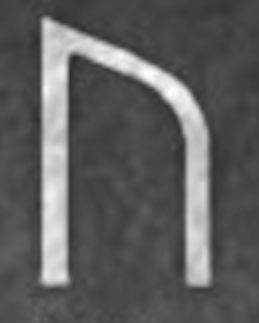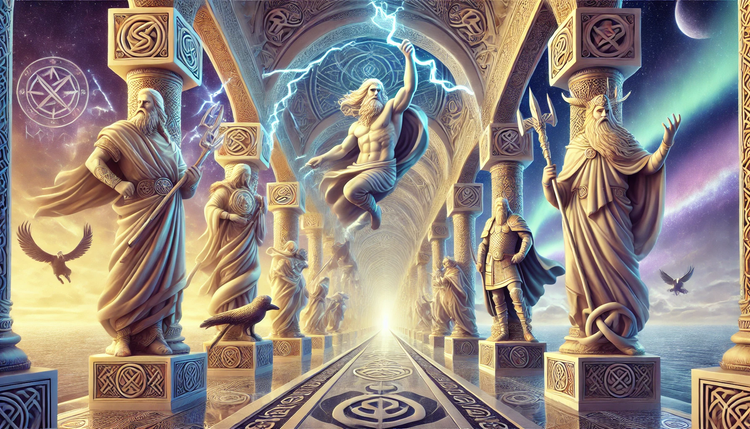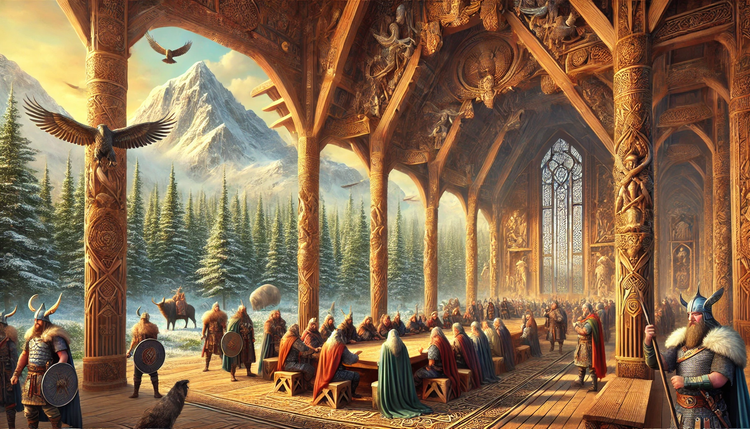Forging a Renaissance of Realms

SagaHalla™: The Dawn of a New Era in Blockchain Innovation for Cooperatives
In the world of blockchain innovation, a new era is dawning, and its name is SagaHalla. Inspired by ancient stories, modern cooperative principles, and the transformative power of blockchain technology, SagaHalla aims to be more than a project—but a movement. At its core, SagaHalla draws from Norse mythology, cooperative culture, and blockchain’s potential to reshape governance and economic models. Sail on a journey from the ancient sagas that inspired SagaHalla to the technological innovations driving the next evolution of decentralized applications (DApps).
The Root of Saga: Prasaga and the Ancient Stories
SagaHalla™ begins with the concept of the Saga itself. Derived from Old Norse, a saga is a story—an epic tale of heroes, battles, and journeys. In this modern age, the root of the word lives on in Prasaga, a nascent Layer 1 blockchain whose name translates to “ancient saga.” Prasaga will provide the foundation for building modern blockchain ecosystems, offering scalability, security, and composability. Just as sagas transmitted knowledge and culture through generations, Prasaga aims to carry forward the blockchain narrative into the future by enabling cutting-edge composable DApp development.
SagaHalla™ embraces this storytelling tradition, recognizing that we are now writing the sagas of our era through decentralized technology. By looking to the past, we understand how stories shape societies—just as blockchain is shaping the future of governance, cooperation, and innovation.
Norse Sagas: A Source of Inspiration for SagaHalla™
The ancient Norse sagas serve as a powerful inspiration for SagaHalla’s vision. These tales of gods, warriors, and cooperative survival in a harsh world speak to the resilience, wisdom, and strength needed to thrive today. SagaHalla™, much like the heroes of these sagas, seeks to overcome modern challenges—whether technological, economic, or societal.
In SagaHalla™, the symbolism of ancient Norse runes plays a critical role in both governance and narrative frameworks. Each rune embodies core principles that guide the project and selection of the token names:
Kenaz  : the rune of fire, light, and transformation, symbolizes the
: the rune of fire, light, and transformation, symbolizes the  token, representing community contributions and the energy that fuels the cooperative. In the sagas, fire is both a destructive and renewing force—a catalyst for change that can bring both hardship and strength.
token, representing community contributions and the energy that fuels the cooperative. In the sagas, fire is both a destructive and renewing force—a catalyst for change that can bring both hardship and strength.
Uruz  : symbolizing strength and endurance, Uruz represents the
: symbolizing strength and endurance, Uruz represents the  token, which protects the cooperative’s governance. Like the wild ox it symbolizes, Uruz reminds us that resilience is key to both survival and progress, much like the collective strength of a cooperative.
token, which protects the cooperative’s governance. Like the wild ox it symbolizes, Uruz reminds us that resilience is key to both survival and progress, much like the collective strength of a cooperative.
Mannaz  : symbolizes humanity, cooperation, and mutual aid. The
: symbolizes humanity, cooperation, and mutual aid. The  token draws from Mannaz, symbolizing governance, collective decision-making, and the foundation of cooperative growth. It represents the strength of unity, emphasizing that people—not just capital—are at the heart of cooperative success.
token draws from Mannaz, symbolizing governance, collective decision-making, and the foundation of cooperative growth. It represents the strength of unity, emphasizing that people—not just capital—are at the heart of cooperative success.
Tiwaz  : symbolizes justice, honor, and leadership. The early founders' token,
: symbolizes justice, honor, and leadership. The early founders' token,  , is inspired by Tiwaz, symbolizing integrity and wise leadership, essential for maintaining fairness and accountability within the cooperative’s governance structure.
, is inspired by Tiwaz, symbolizing integrity and wise leadership, essential for maintaining fairness and accountability within the cooperative’s governance structure.
A Cooperative Culture Inspired by Norse Tradition
Norse culture, rooted in cooperation and community, heavily influences the SagaHalla model. Ancient Norse societies thrived on shared effort and mutual protection, much like modern cooperatives. Today, Scandinavian countries are leaders in locally focused cooperative business models, with successful economies driven by a blend of innovation, equality, and community-driven ownership. The thriving local focused cooperative businesses in this region are a testament to how cooperatives can empower communities while fostering sustainable growth and innovation.
SagaHalla seeks to blend these cooperative principles with the potential of blockchain. By decentralizing governance and capital ownership, the SagaHalla framework creates a system where power is distributed, contributions are valued, and innovation is incentivized. Rooted in the legacy of Norse cooperation, SagaHalla harnesses modern technology to build an ecosystem where people, not just financial capital, drive the community’s success.
1551 Renaissance™
Why 1551? This year holds a special place in the design of SagaHalla™ and the modern cooperative business structures it seeks to advance. Historically, 1551 immediately after Copernicus' discovery of the helio centric solar system in in the Late Renaissance, an era where the world stood at the crossroads of new knowledge and social change. Yet, while the Renaissance reshaped Europe’s intellectual and artistic landscape, the principles of cooperation—so integral to Nordic culture—were largely left out of this rebirth replaced by a celebration of individual achievements.
At a time when new ideas were flourishing, the spark to integrate cooperative governance into the fabric of emerging capitalist structures was missed, left as embers to rekindle. The world moved toward hierarchical power systems and capital ownership, leaving behind a tradition where communities shared in both the risks and rewards of collective effort.
SagaHalla™ seeks to reflect and move forward on a historical mission. The year 1551 represents more than just a moment in time—it serves as a symbolic point of missed historical opportunity to bring cooperative values into the mainstream. SagaHalla™ embraces a new opportunity to weave cooperative principles into the fabric of modern capitalism on a global scale. By putting people first, as owners of both capital and governance, SagaHalla™ reimagines what it means to build a sustainable, people-centered economy in the 21st century that will be so important in a future of AI abundance frought with increasing capital concentration risks.
While we won’t yet reveal all the details of why 1551 is so central to the design of SagaHalla, we can say this: it serves as the keystone for our vision of rekindling a Renaissance of cooperative governance—one that blends ancient wisdom with modern technology. The story of SagaHalla is just beginning. The 1551 Renaissance™ is the modern saga where a blueprint for this goal is finally possible.
Stay tuned as we prepare to reveal the full significance of the 1551 numerology and why it represents a new beginning for cooperative capitalism in the blockchain era. Together, we are writing the new modern saga, one that transcends the limitations of the past and drives us toward a future where community, cooperation, and people-powered economies lead the way.
Join the movement and be part of the 1551 Renaissance™—a new era of cooperative innovation, rooted in mystical truths and powered by verified trust.







Member discussion